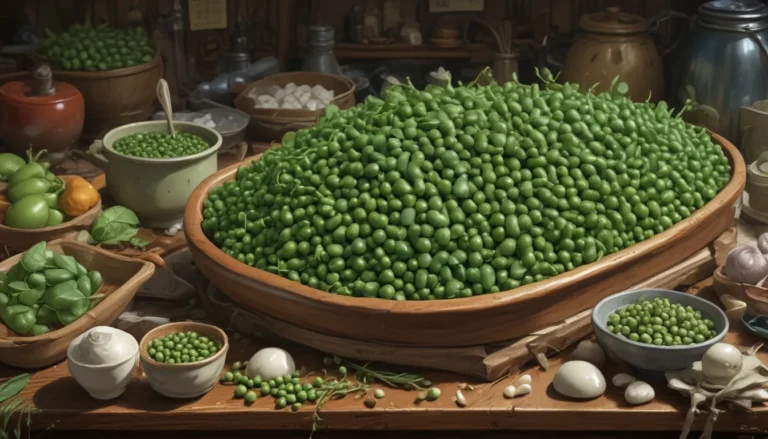Ultimate Guide on Winter Care for Succulents

Are you a fan of succulents? Those colorful, diverse, and easy-to-care-for plants that brighten up any living space? Well, if you are, then you know that the transition from summer to winter can be a challenging time for these heat and sun-loving plants. But don’t worry, caring for your succulents during the winter season is easier than you might think!
In this comprehensive guide, we’ll cover everything you need to know about caring for your succulents during the winter months. From understanding how winter affects your plants to tips on moving them indoors, providing the right amount of sun and heat, managing water intake, feeding, and preventing pests and diseases – we’ve got you covered. So, let’s dive in and learn how to keep your succulents happy and healthy during the chilly winter season.
Understanding How Winter Affects Succulents
Winter brings about a significant change in light, temperature, and overall growth conditions for your succulents. As the days grow shorter and the sunlight becomes less intense, plants enter a period of dormancy where their growth slows down. Succulents, in particular, are known for their love of sun and heat, so the decrease in sunlight during winter can have a negative impact on their health.
When exposed to insufficient light, succulents may shed leaves or become etiolated, resulting in a long, thin, and stringy appearance. To prevent this from happening, it’s essential to provide your plants with the right care and attention during the winter months.
Moving Indoors: A Smart Decision
Deciding whether to move your succulents indoors during winter largely depends on your USDA Hardiness Zone. If you live in Zones 6 or below, where winters are severe, it’s best to bring your plants indoors. For those in Zones 7 and above, check the hardiness level of your specific succulent species to determine if they can withstand outdoor winter conditions.
Before transitioning your plants indoors, make sure to inspect them for pests and diseases. Treat any existing issues with insecticides or other remedies to prevent them from spreading. Additionally, consider changing the soil to provide a fresh start for your plants. Use a well-draining soil mix that is low in organic matter to promote healthy growth.
Providing Sun and Heat
Succulents thrive in bright, sunny environments, so when moving them indoors, it’s crucial to place them in areas with ample sunlight exposure. Rooms with sunrooms, bay windows, or south-facing ledges are ideal locations for your plants. If natural light is limited, consider investing in grow lamps equipped with fluorescent or LED bulbs to supplement the light requirements of your succulents.
During winter, it’s essential to maintain cool nighttime temperatures around 50°F to simulate dormancy and promote healthy growth for the upcoming season. However, avoid excessive heat levels and ensure adequate air circulation to prevent issues like mold or mildew.
Water Management: Less is More
One of the most critical aspects of winter care for succulents is proper water management. During the winter months, reduce the frequency of watering to prevent root rot and other moisture-related issues. Instead of watering your plants weekly, water deeply once a month or even less frequently to accommodate their reduced growth rate.
To determine when to water your succulents, perform the finger stick test by checking the soil moisture level with your finger. Water only when the soil is dry up to the first knuckle and ensure proper drainage to prevent waterlogging. Overwatering can lead to root rot and other health problems, so it’s essential to monitor your plants closely and adjust their watering schedule accordingly.
Fertilizing: When and How
Succulents are generally low-maintenance plants that don’t require frequent feeding. However, under specific circumstances like root-bound conditions or after periods of rapid growth, a dose of succulent fertilizer or a balanced NPK fertilizer may be beneficial. Avoid fertilizing your plants during the winter months when their growth rate is naturally slow.
Wait until spring when your succulents start actively growing again and receive sufficient sunlight to promote healthy development. Early-season feeding can lead to rapid but weak growth, so it’s best to feed your plants after they have adjusted to their new environment and are ready to grow vigorously.
Pest and Disease Prevention
Winter conditions can make succulents more vulnerable to pests and diseases due to reduced airflow, lower temperatures, and slower growth. To prevent infestations, inspect your plants regularly and address any issues promptly. Maintain proper spacing between plants, moderate humidity levels, and stable temperatures to create an inhospitable environment for pests and diseases.
If you notice signs of pest infestations, such as yellowing leaves, discolored spots, or insects on your plants, take immediate action to prevent further damage. Hand-picking pests, using insecticidal soap, or cleaning leaves with rubbing alcohol are effective remedies for common pest problems in succulents. By staying vigilant and proactive, you can protect your plants from unwanted invaders and ensure their health and vitality.
Winter Wonderland: A Succulent Oasis
In conclusion, caring for succulents during the winter months doesn’t have to be a daunting task. With the right knowledge and practices, you can provide your plants with the care they need to thrive indoors and prepare for the upcoming growing season. Remember to adjust their water, light, and temperature conditions to mimic their natural dormancy cycle, and monitor them closely for signs of pests or diseases.
By implementing these tips and strategies, you can create a winter wonderland for your succulents and enjoy their vibrant beauty year-round. Share your winter care tips and experiences with succulents in the comments below – we’d love to hear from you!
Ready to expand your succulent collection? Explore our additional resources for more tips on growing and caring for a variety of succulent species, both indoors and outdoors:
- Tips for Growing Succulents in a Greenhouse
- How to Grow Succulents Outdoors in the Garden
- 11 Easy Care Exotic Succulents to Grow at Home
- How to Grow and Care for Autumn Joy Sedum (Stonecrop)
Remember, with the right care and attention, your succulents can thrive in any season and bring joy and beauty to your home. Happy growing!
By enhancing the original article with additional information, practical tips, and a reader-friendly tone, we’ve created a comprehensive guide on caring for succulents during the winter season. This revised version provides valuable insights and actionable advice for readers looking to maintain healthy and vibrant succulents year-round.





